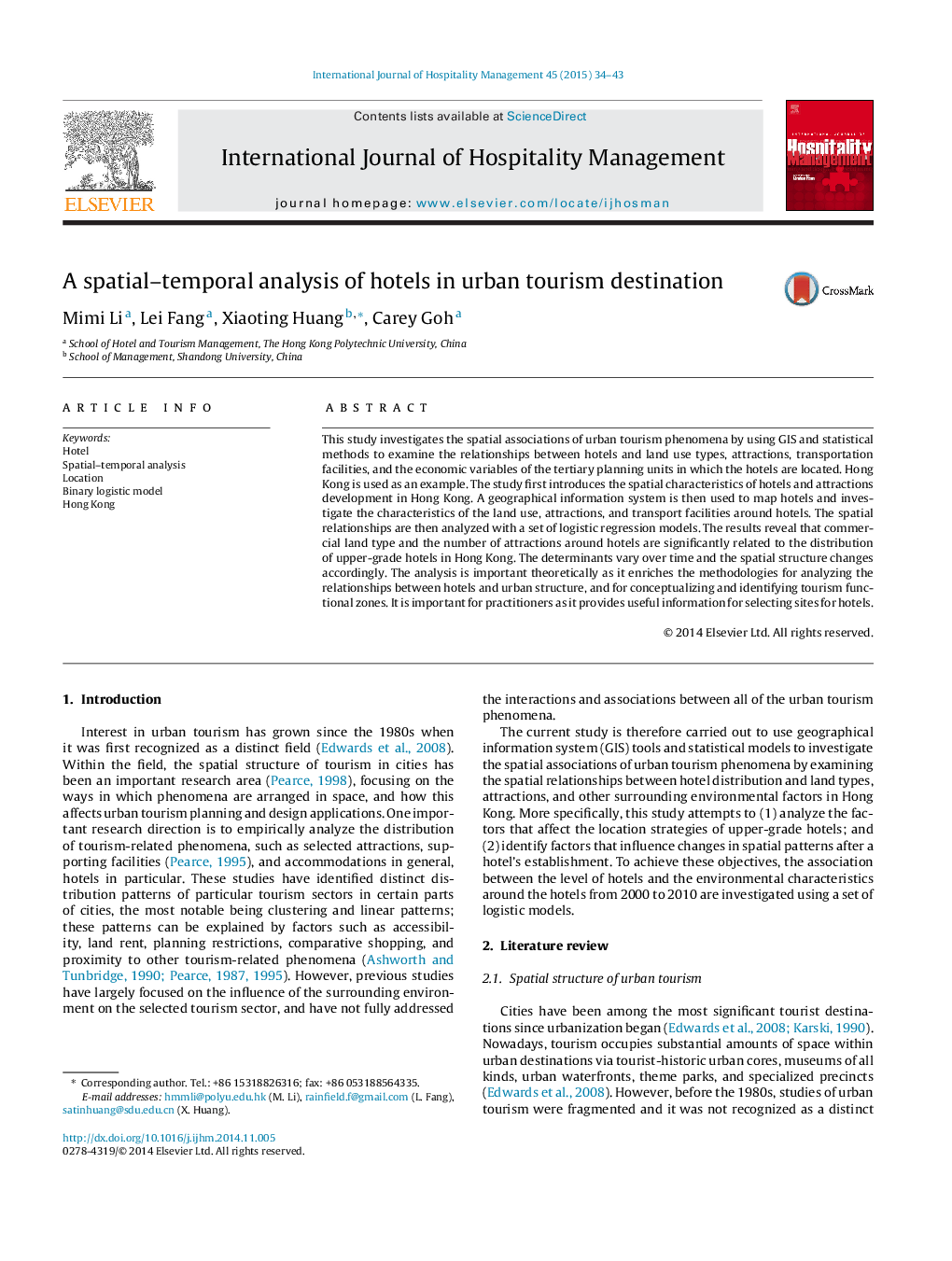| Article ID | Journal | Published Year | Pages | File Type |
|---|---|---|---|---|
| 1009377 | International Journal of Hospitality Management | 2015 | 10 Pages |
This study investigates the spatial associations of urban tourism phenomena by using GIS and statistical methods to examine the relationships between hotels and land use types, attractions, transportation facilities, and the economic variables of the tertiary planning units in which the hotels are located. Hong Kong is used as an example. The study first introduces the spatial characteristics of hotels and attractions development in Hong Kong. A geographical information system is then used to map hotels and investigate the characteristics of the land use, attractions, and transport facilities around hotels. The spatial relationships are then analyzed with a set of logistic regression models. The results reveal that commercial land type and the number of attractions around hotels are significantly related to the distribution of upper-grade hotels in Hong Kong. The determinants vary over time and the spatial structure changes accordingly. The analysis is important theoretically as it enriches the methodologies for analyzing the relationships between hotels and urban structure, and for conceptualizing and identifying tourism functional zones. It is important for practitioners as it provides useful information for selecting sites for hotels.
